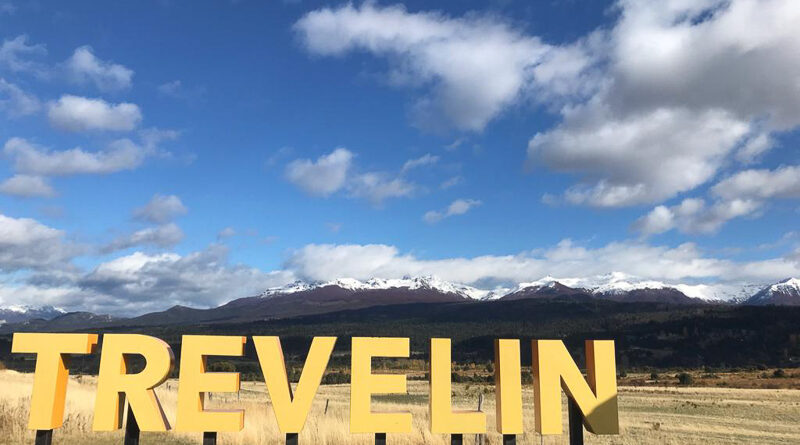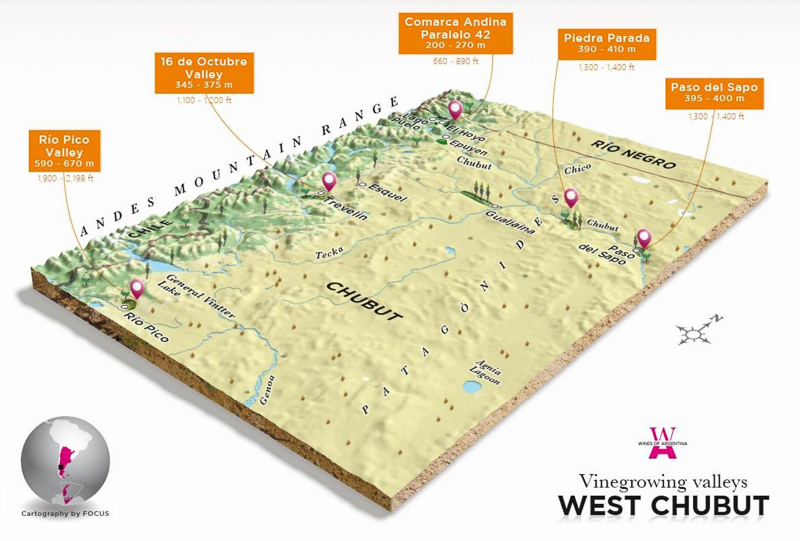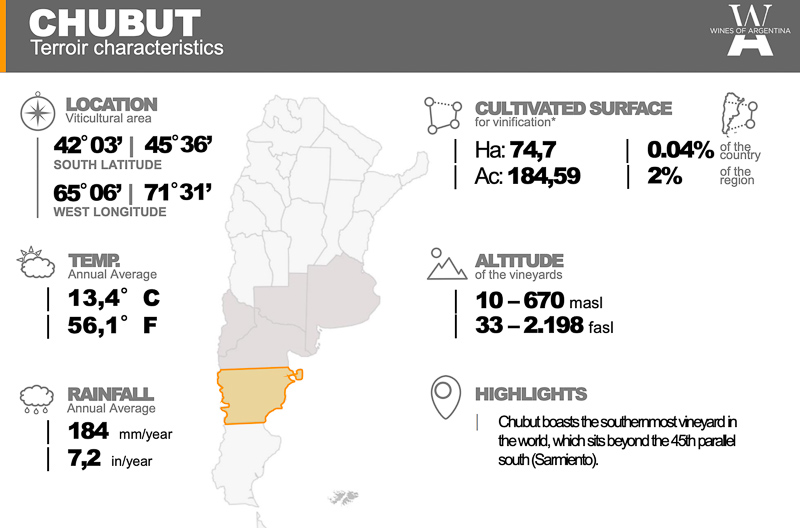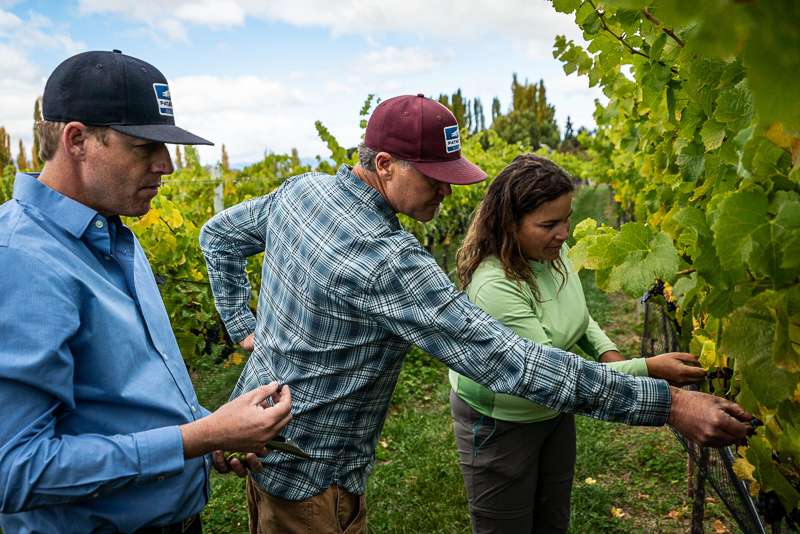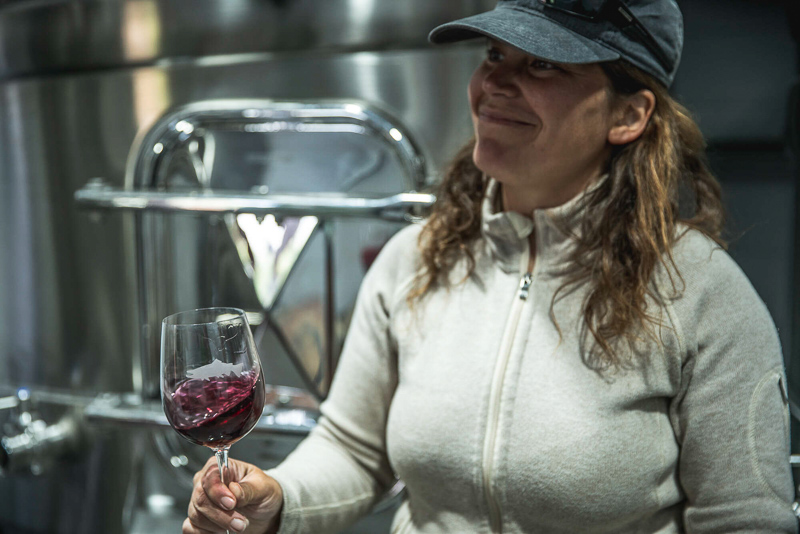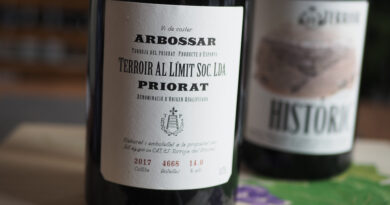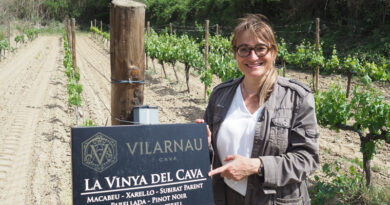Bodega Contra Corriente: Welsh-speaking Chubut in Patagonia is producing cool climate wines to sing about
Lisse Garnett tells the story of a new wine region with an intriguing history, in Argentina’s Patagonia. Wine notes by Jamie Goode
Those who have mastered the Welsh tongue will find an articulate welcome in Trevelin, Trelew and Gaiman, Western Patagonia. This is where the largest population of Welsh speakers in the world resides outside Wales. Three bilingual schools and even a Welsh café mark the region where intrepid migrants set up home 150 years ago. The colony was the brainchild of a staunchly Nationalist Welsh Congregationalist Minister named Michael Jones. These Protestants came seeking a new utopian life far from the influence of the English language where they might preserve Welsh culture and start anew. They came in The Mimosa, a small clipper rudely adapted for passengers, setting sail from Liverpool on the 28th of July 1865. The journey took eight weeks and cost twelve pounds an adult, six for children.
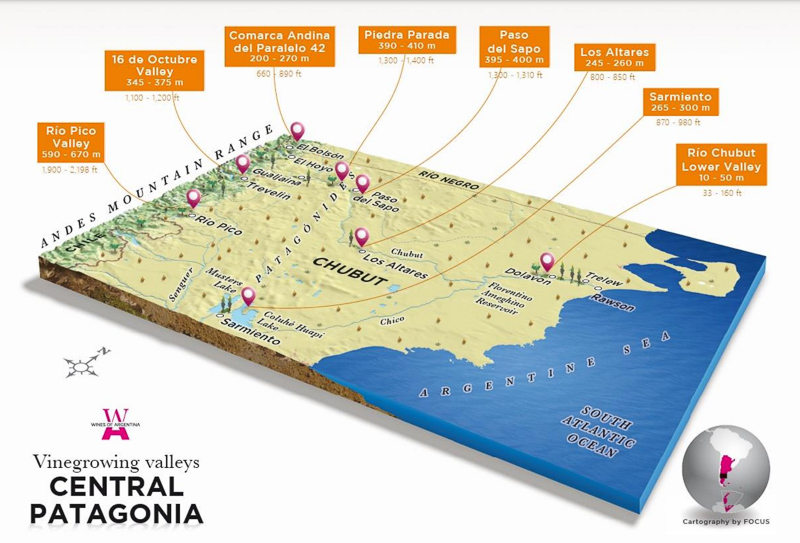
An Argentine government keen to increase population in a territory disputed by Chile had rather exaggerated the hospitable nature of Chubut’s semi-arid pampas river basin. 153 migrants initially found the ‘fertile’ 100 square mile patch of land they were promised was anything but. Forced to wander on, pushing their belongings in wheel-barrows, they finally settled on a spot some forty miles further off, near to a river they named the Camwy. Here they found the green valley they’d hoped for. Y Wladfa, ‘The Colony’ is the welsh word for the collection of small settlements that resulted along the coast of the lower Chubut Valley.
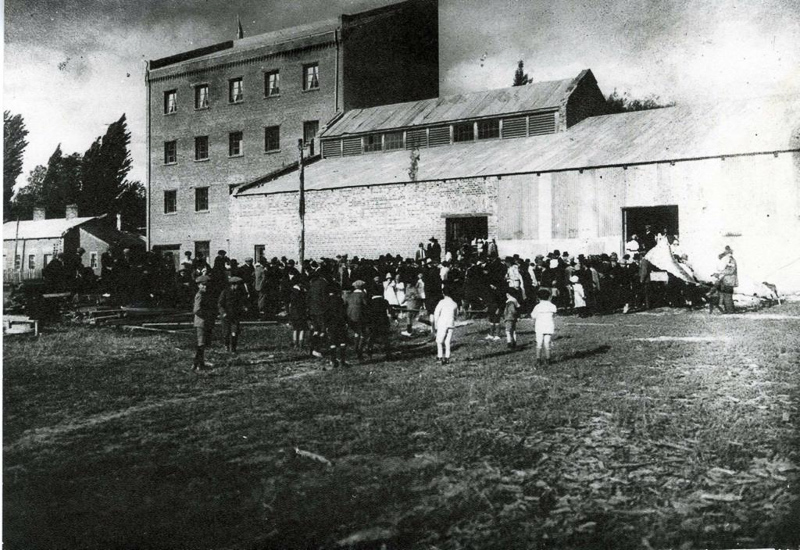
Trevelin windmill, taken in 1928 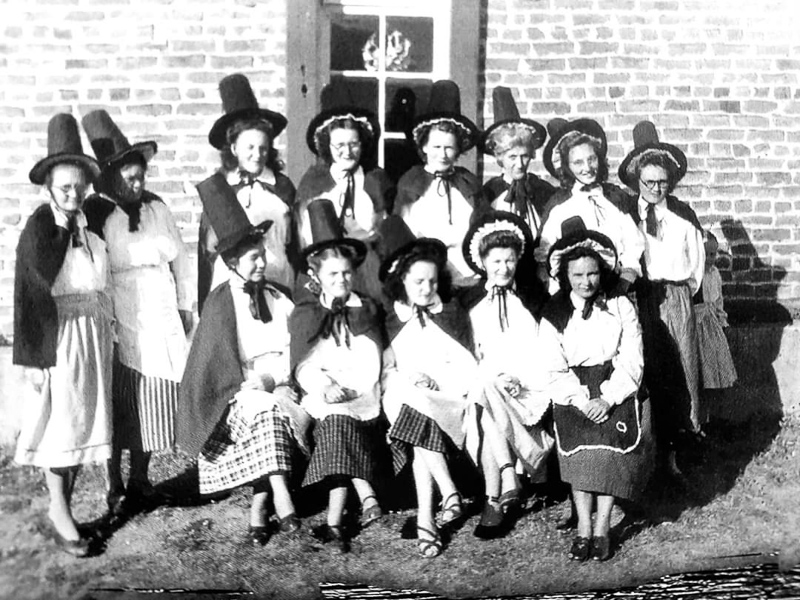
Traditional Welsh dress 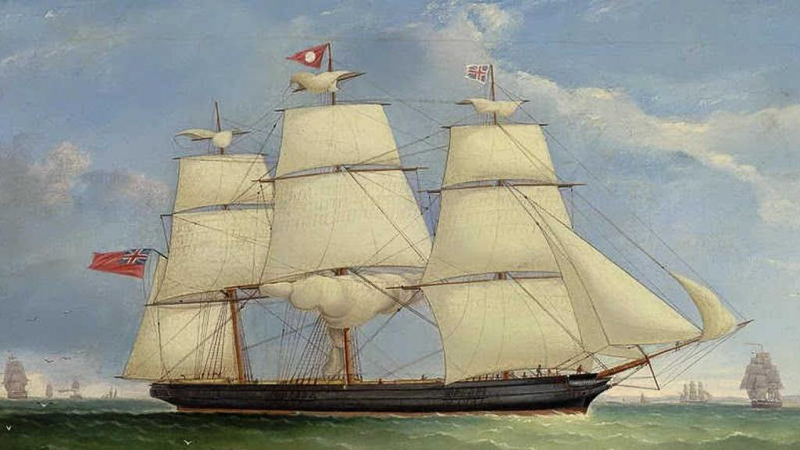
The Mimosa, which sailed from Wales in 1865 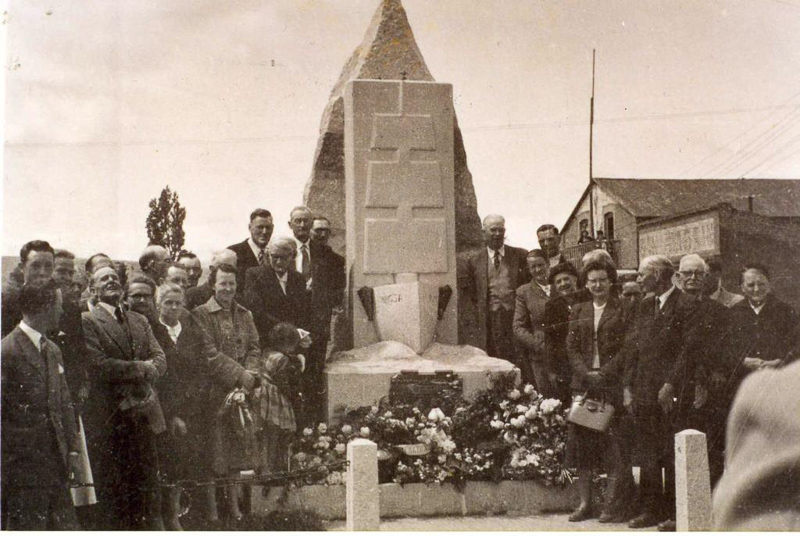
A memorial to the first Welsh passage aboard the Mimosa is unveiled in 1957 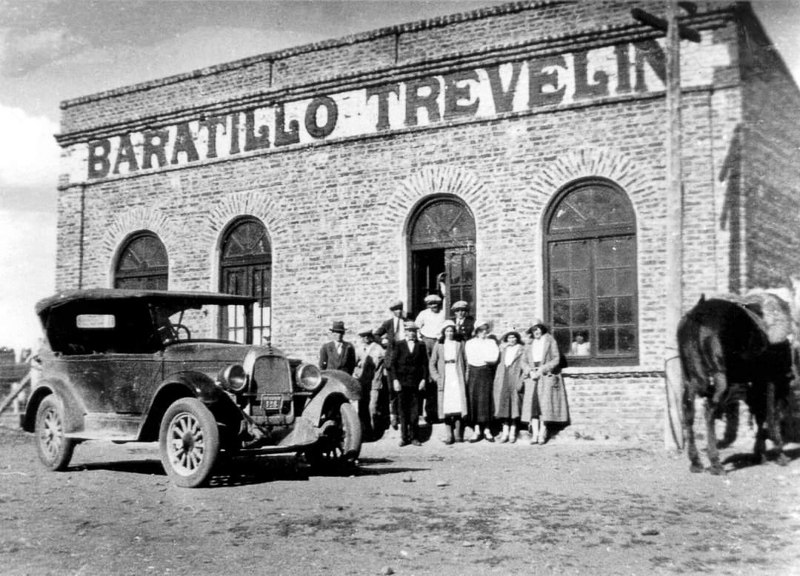
The local ‘dime’ store
But the way was far from set, floods followed droughts, initially where they landed in Trelew there was no wood for construction and without the aid of the local Tehuelche tribe who taught them how to make shelter and find food, together with several deliveries of supplies from home, they might not have survived. One of the party, Rachel Jenkins realised that they needed to irrigate the valley to grow crops, and the settlement grew and prospered as a result. Within twenty years wheat production had risen to 6000 tonnes a year, thanks in part to a continual stream of migrants escaping depression in the coalfields of South Wales, willing to take on the back breaking irrigation work.
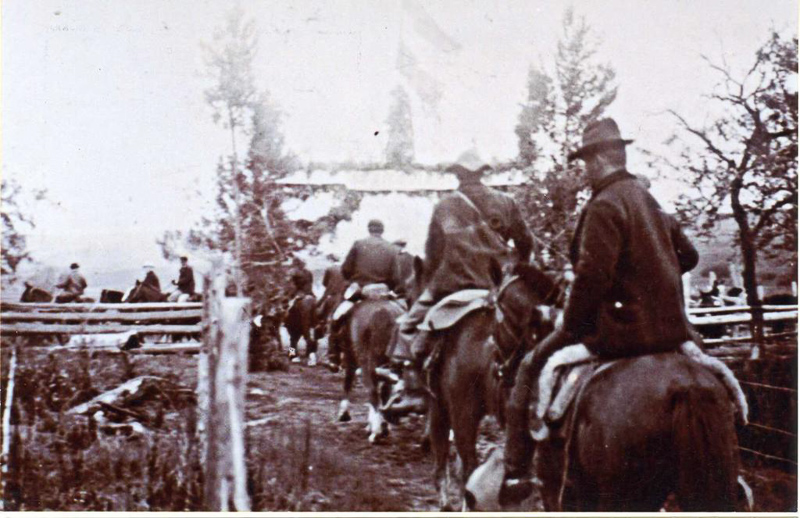
Chile laid claim to this land for many years and in 1902 a vote was held that included the Tehuelche Indians and the Welsh Colonists. The inhabitants voted to remain in Argentina. In 1997 the British Council founded the Welsh Language Project in Patagonia. Every year Language Development Officers are dispatched to ensure the purity of the Welsh language being taught. Michael D Jones and his nationalist brethren would be most pleased.
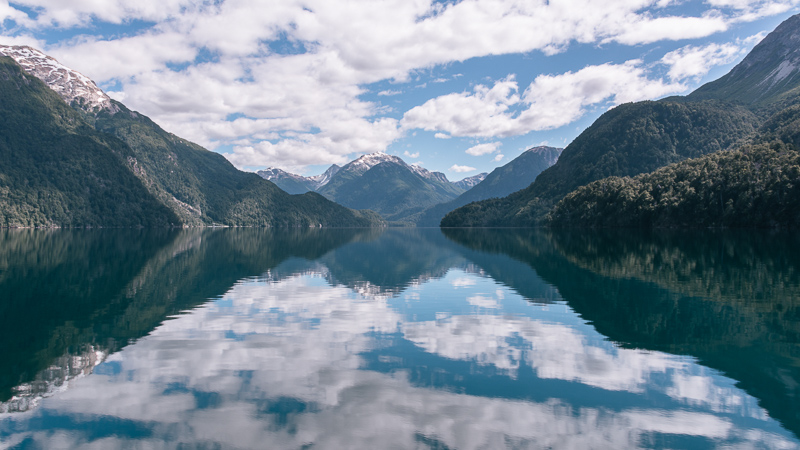
Northern Patagonia is at the edge of the grape growing universe where a few crazy growers are making cool climate wine in tiny quantities. Chubut claims the Southernmost vineyard in the world, beyond the 45th parallel. Extreme cold, frost and strong winds make for truly tough growing conditions. But despite this, Pinot Noir, Chardonnay, Gewürztraminer, Semillon, Sauvignon Blanc, even Marsanne are finding a home in this small nascent region.
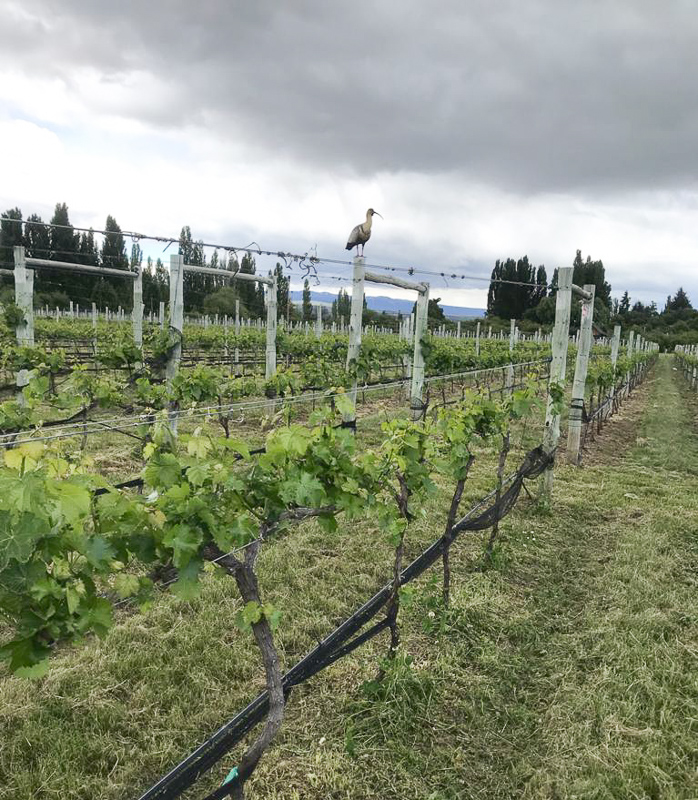
Trevelin is in the northwest of Chubut between 43 and 44 degrees south, only 19 miles from the Chilean border. Topographically its valley is bang in the middle between the northern segment of the Patagonian Cordillera of the Andes and pre mountain range of Chubut. The mountain range blocks most of the rain, which lands on the Chilean side. Volcanic, glacial and alluvial soils dominate and forests cover the foothills; the east is rich in meadows. The Pacific Ocean is a mere 50 miles away. The diurnal range here can be incredible: with 17 hours of summer sunlight temperatures can fluctuate by 30 degrees C between day and night. Snow and frost create drama for vines, drip irrigation mitigates the risks.
There are only three projects producing wine here at the moment, Nant y Fall, Casa Yagüe and Contra Corriente (whose wines we sampled for this piece). Like the Welsh settlers these producers have had much to overcome.
Bodega Contra Corriente consists of three hectares planted with Gewürztraminer, Chardonnay and Pinot Noir. The project started only six years ago, so 2018 was the first real year of wine production. In 2019 a further hectare of Pinot Noir was planted on the valley slope bringing the total to four, the average altitude is 384 metres but the latitude is the significant factor. Sandwiched between Chile’s humidity and the dry steppe they have 700-800 mm of annual rain, Alerces park has 3000mm. The challenges of a harsh and unpredictable climate mean vines must be closely monitored. Strong UV rays in Summer combined with strong winds mean shoots must be diligently arranged and tied. Fruit is covered to avoid sunburn. On the plus side, dry weather and wind mean there is little use for chemicals. Extreme thermal amplitude and frosts create further challenges but provide fantastic acidity and intensely aromatic flavours too.
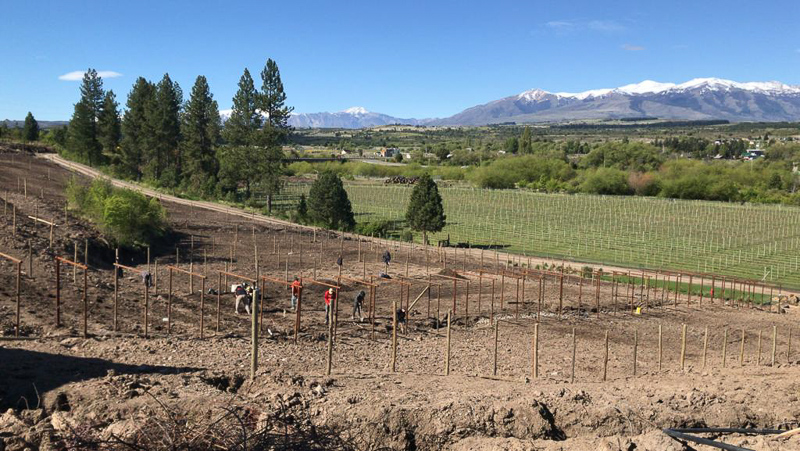
The small grape growing community here in this freshly minted GI (August 2020) have to work together to harvest and share bottling equipment as there is no local culture of winemaking nor is there a ready workforce. All equipment must be expensively shipped from Mendoza or Neuquén so real dedication and cash commitment is required. Yet these projects are small scale and artisanal, utopian even. Bodega Contra Corriente is the result of the work of two keen fly fishermen from Montana, Travis Smith and Rance Rathie who had come to Trevelin to fish. Having established a fly fishing lodge they chanced to hook up with a grape grower who told them it was the perfect spot for cool climate grapes. They didn’t know what they were getting into but took a risk and became pioneers.
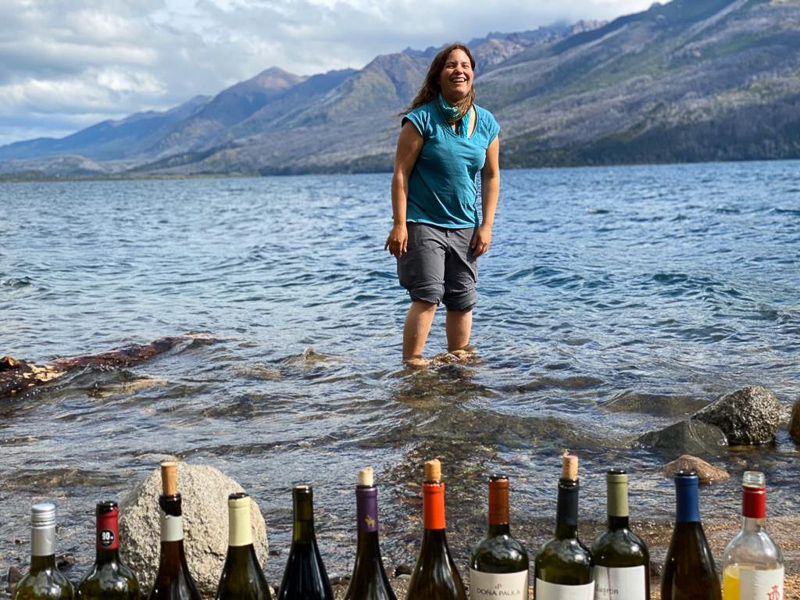
Bodega Contra Corriente’s winemaker Sofia Elena has that pioneering spirit too, much in the mould of the early Welsh settlers. Young, skilled and well-travelled, she has settled here in this beautiful, culturally idiosyncratic, sparsely populated spot because she believes in the regions potential for making incredible wine.
Jamie’s notes follow..
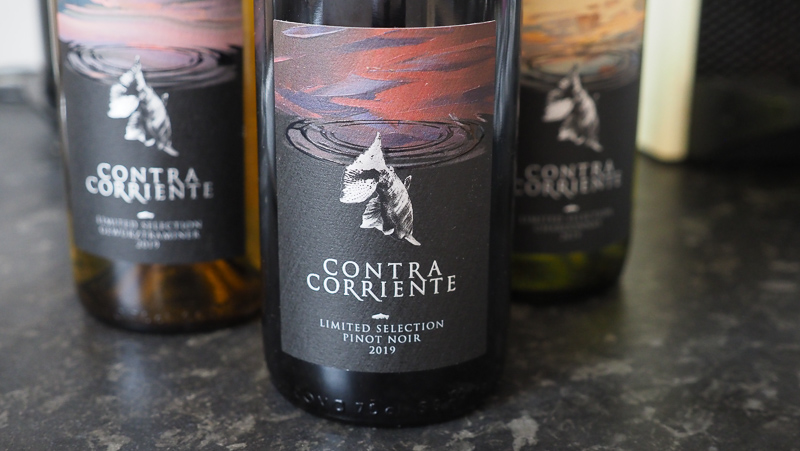
Contra Corriente Limited Selection Pinot Noir 2019 Trevelin Valley, Chubut, Patagonia
12% alcohol. This has a really distinctive aromatic nose with sweet, floral raspberry and cherry fruit as well as some leafy green notes. The palate is sappy, vivid and bright with raspberry notes as well as a touch of cranberry. It’s at the cusp of ripeness, and shows lovely vivid, bright fruit. Nicely tart with a juicy edge. 90/100
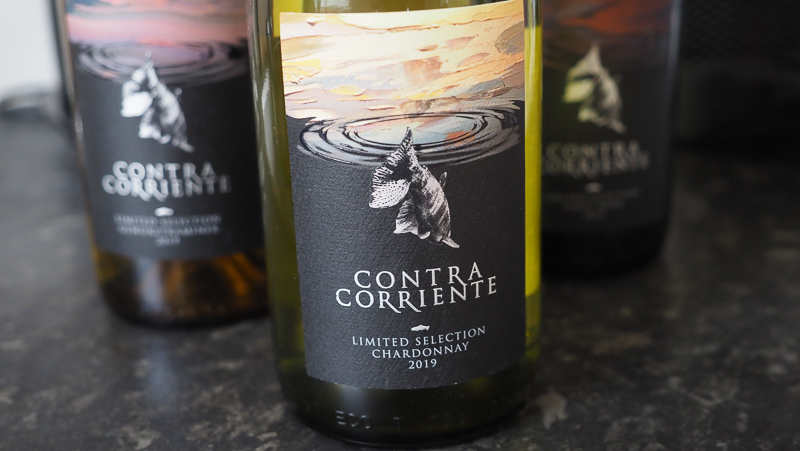
Contra Corriente Limited Selection Chardonnay 2019 Trevelin Valley, Chubut, Patagonia
12.4% alcohol. This is taut and lemony with lovely crisp citrus fruit with a fine savoury element, showing a stony edge to the grapefruit and lemon notes, with a twist of orange peel. Has a bit of grip, too. Quite linear and bright, with a restrained sort of ripeness. 91/100
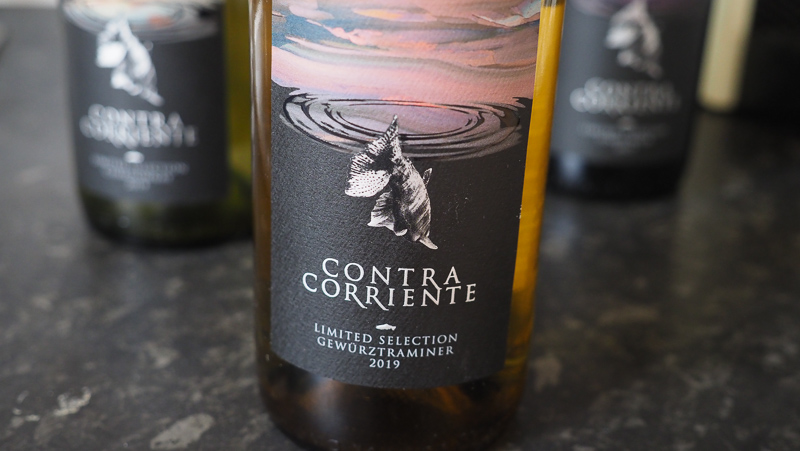
Contra Corriente Limited Selection Gewurztraminer 2019 Trevelin Valley, Chubut, Patagonia
12.7% alcohol. This is a very delicate expression of Gewurztraminer, with lovely grape and lychee notes as well as a keen citrus core. It has a really bright personality, with those typical Gewurz characters kept in check a bit. Very stylish. 89/100

